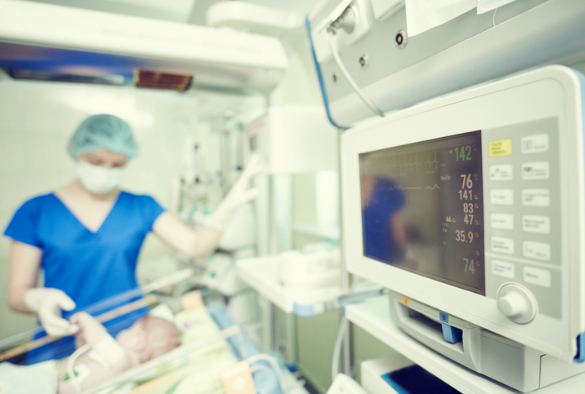Researchers at the University of Liverpool have identified a unique method of identifying the early signs of a potentially serious condition known as Acute Kidney Injury (AKI).
The condition occurs commonly in critically ill children admitted to paediatric intensive care units often because of reduced blood supply to the kidneys (for example due to dehydration or sepsis), heart bypass surgery, or due to medicines which can cause kidney injury. Children who develop AKI have poorer immediate outcomes including longer hospital stay and increased mortality. They also have an increased risk of long-term reduction in kidney function (Chronic Kidney Disease).
Diagnosis of AKI depends on identifying elevation of a substance called creatinine in the blood. However, this only rises slowly after a kidney injury, therefore recognition of AKI is frequently delayed. If doctors can identify children at high risk for AKI early on, then pre-emptive therapy, such as renal replacement therapy (dialysis), could be instituted earlier to protect the kidneys from further injury.
In this study, led by Dr Rachel McGalliard and Dr Steve McWilliam, the team looked at the potential of two early markers to predict severe AKI in children admitted to the Paediatric Intensive Care Unit (PICU) at Alder Hey Children’s NHS Foundation Trust. The first, a protein called Neutrophil Gelatinase-Associated Lipocalin (NGAL), measured in urine and blood, and the second is a clinical score called the Renal Angina Index (RAI).
After an extensive study, the team found that a combination of RAI and urinary NGAL on the first day of PICU admission provided an accurate prediction for severe AKI – a potentially life-saving discovery for many critically-ill children.
In the study, 16% of children admitted to PICU developed severe AKI within 72 hours of admission, and 7% required renal replacement therapy. In keeping with previous studies, development of AKI was associated with prolonged PICU admission and increased mortality. A novel finding in this study, was that AKI was also associated with increased risk of hospital-acquired infection.
Dr McGalliard, an NIHR Academic Clinicainfectionl Fellow in Paediatric Infectious Diseases and first author on the paper, said: “I am most proud of the analysis being in a clinically heterogenous paediatric population. Potentially, these results could lead to earlier identification of acute kidney injury (AKI) in critically ill children and could be used to trial pre-emptive therapy, if validated in further studies.”
Dr McWilliam, a Senior Lecturer in Paediatric Clinical Pharmacology, said: “The results of this study are extremely exciting. The renal angina index is a simple calculation that could easily be automatically provided in electronic medical records at PICU admission. NGAL assays compatible with most clinical laboratory analysers are now widely available, making its real-time measurement in these critically unwell children realistic. We are now in a great position to investigate whether having these results available in real-time in PICUs could lead to reduced rates of AKI in these children, and whether they can be used to effectively target protective strategies to those at high risk of AKI.”
The authors would like to acknowledge the children, young people, parents and carers who participated in the study, and the PICU staff, especially the research nurses who delivered the study. They also acknowledge funding from the NIHR Liverpool Biomedical Research Centre in Microbial Diseases (2007-2012) and Alder Hey Charity to study lead Professor Enitan Carrol, from the Institute of Infection, Veterinary and Ecological Sciences.
Research reference
Identifying critically ill children at high risk of acute kidney injury and renal replacement therapy, PLOS ONE, https://doi.org/10.1371/journal.pone.0240360
